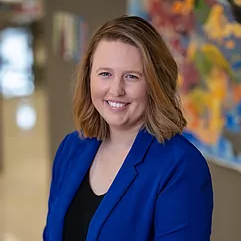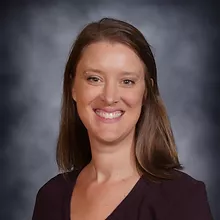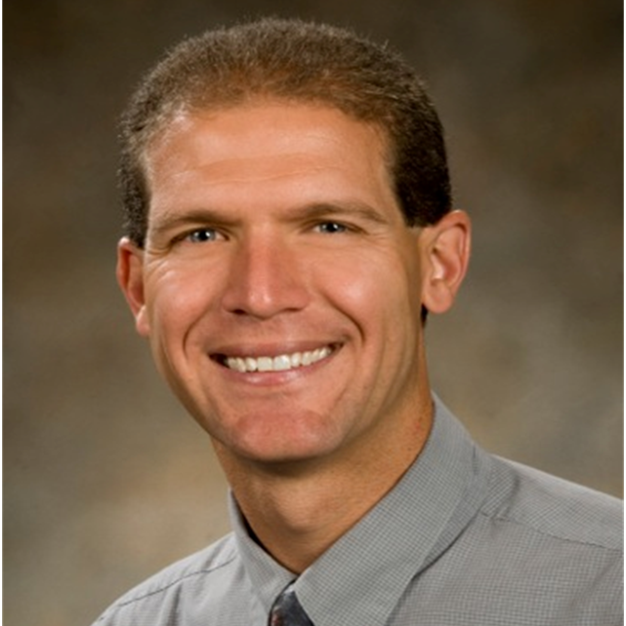The Ohio STEM Learning Network recently announced the addition of two educators to help lead the network’s Dayton Hub. Jenn Reid and Stephanie Adams Taylor, both on staff at the Dayton Regional STEM School in Kettering, will join Dr. Brian Boyd, associate professor of mathematics education at Wright State University, in directing the hub’s programming, professional development, partnerships and outreach. To gain a bit of insight into their educational backgrounds, current jobs and plans for the hub, we contacted Reid and Taylor with a few questions. They collaborated on their answers, except when responding to our first question:
Q: Tell us about your education/career backgrounds and your current positions at the Dayton Regional STEM School (DRSS).

Taylor: I am the director of strategic partnerships at the school. I am a proud Wright State University Raider (x2)! I have a bachelor’s degree in social science education and a master’s in student affairs in higher education, focused in public relations in education.
After working in higher education for several years, I found my dream job here at the DRSS. The position combines everything I love about my field – community outreach, fostering relationships, sharing inspiring stories and institutional advancement – all while serving the future leaders of the Dayton region. This is my fourth school year with the DRSS, and I can’t imagine myself anywhere else!

Reid: I am the DRSS Training Center coordinator and project-based learning (PBL) coach. This is my 11th year at the school; prior to these roles, I taught 10th- and 12th-grade English language arts for nine years. I am also lucky to be a parent of a DRSS eighth-grader.
I received my undergraduate and graduate degrees from Miami University, and I taught in Cincinnati and worked in the nonprofit world before moving to the Dayton area. I love supporting teachers in implementing best practices in their classrooms, and so my roles allow me to provide professional development to teachers throughout the Miami Valley and meet daily with teachers at the DRSS to help support their students’ growth through project-based and inquiry-based learning.
Q: Now tell us about DRSS, its mission, the grade levels and student population it serves and what makes it unique among STEM-based schools in your area and/or in Ohio.
A: The Dayton Regional STEM School’s mission is to prepare and inspire the next generation of leaders and innovators. We are a public, independent STEM school (one of seven in Ohio) and a school of choice for students in grades six-12.
Our 730 students represent 35 districts in seven counties across the region. The school’s unique and student-centered learning model focuses on STEM principles, PBL, career exploration, professional competencies and workforce development.
Because our admission process is based on a lottery, any student who applies has the opportunity to be a STEM innovator, no matter his or her personal or academic background, abilities or preparedness.
Q: DRSS also serves as a provider of professional development (PD) for educators. How does that figure into the school’s mission, and what are some examples of PD offered at the DRSS Training Center?
A: Since our founding in 2009, the DRSS’ purpose was to be an asset to the community rather than a competitor in education. Our goal is to always do what is best for students and to help advance STEM education everywhere. To do this, the Dayton Regional STEM School’s Training Center was created.
The Training Center has been a provider of professional development for educators in our region and beyond. It has also been a way for our community’s educators to connect with colleagues, share best practices and facilitate important dialogue in our ever-changing industry. Some popular trainings, with descriptions, are:
- PBL in Action School Visits – What does PBL look like in action? Whether you are considering attending a PBL workshop or you have just finished your training, join us at the Dayton Regional STEM School to see PBL in action. Spend your day visiting classrooms where PBL is happening, seeing examples of successful PBL projects across content areas in grades six-12, and engaging with teachers, students and administrators. We think our time together will inspire you to use project-based learning in your classroom or school.
- PBL Deep Dive: Critique in the Classroom – Critique and revision is one of the essential elements of PBL but one that often overwhelms teachers … and students. In this workshop, teachers will participate in several styles of critique, observe students critiquing each other’s work, learn the DRSS critique protocol, “The Thinking Hats,” hear tips and tricks from teachers who use critique regularly, receive sample handouts used by DRSS teachers to organize critique in their classrooms, and organize, plan and receive feedback on their ideas for using critique in their classrooms.
- PBL Deep Dive: PBL in the Math Classroom – Back by popular demand, this workshop, facilitated by a high school and a middle school math teacher, will explore methods for creating and implementing authentic, standards-based math projects. As inquiry-based instruction lends itself well to PBL, teachers will demonstrate how they blend the two. Participants will see several math projects and have time to consult with teachers, and with each other, so that they walk away with new tools and strategies to make PBL work in math class.
Q: How has the pandemic affected the school and the training center as far as providing education? What have the staff and students discovered about teaching and learning during this difficult and unique time?
A: Flexibility is key! One asset that our school has is, we have always been quite nimble and flexible by nature. We are not afraid to break the mold, try new things and take risks, even if we don’t succeed every time. The pandemic has certainly called for flexibility in almost everything that we do, but our team is well-accustomed to coming together, getting creative and moving forward.
DRSS completed its first academic quarter in a fully virtual model. Teachers used live-streaming technology to create a synchronous and more engaging learning experience. For the second quarter, we are using a phased approach to slowly and safely bring students back to campus. There is also a fully virtual option for students, who will continue to live-stream into the classroom with their teachers and peers.
Despite these changes in format, teachers have been implementing collaborative project-based learning with their students since Day One. We are so proud of our teachers’ dedication to engaging learning experiences and of our students’ resilience in rising to meet those challenges.
The Training Center has also adapted its services to this “new normal.” We have created a new online series called “What’s Working Webinar,” during which educators can connect with colleagues in break-out rooms based on content area or hot topic. The goal for these webinars is simple – provide a platform for teachers to share ideas and resources during this unprecedented time. More PD opportunities to come!
Q: In your new roles as co-directors (with Brian Boyd of Wright State University) of the OSLN’s Dayton Hub, how do you plan to support STEM educators and their students initially? What is on your “wish list” for down the road?

A: Each co-director has a unique set of skills to bring to the Dayton Hub, and we’re so excited about working together! We are doing a lot of listening right now, taking inventory of the needs of educators in our community. This will help us determine a path forward for best serving our stakeholders.
We have set up some new communication channels and ways to connect our colleagues to one another. Each of the co-directors is also very involved in the Dayton community, so we are looking at existing STEM initiatives that the Hub can jump on board with and support.
Q: DRSS and its Training Center have had ties to Wright State in the past. Will the university figure into your plans for future hub activities/programs?
A: The Dayton Regional STEM School has close ties with Wright State University as our top partner in education. We will absolutely continue collaborating with the institution, and we’re lucky to have Brian Boyd on our team to help facilitate those connections.
Q: Do you think that STEM education can uniquely address the pandemic as a subject matter with students and help them feel more equipped to handle its daily challenges?
A: At DRSS, we work to instill five qualities in each of our students – collaboration, inquiry, creativity, persistence and communication. These are the qualities that it takes to succeed in STEM (and beyond), to solve any problem and to be a great leader. STEM education is so much more than “science, technology, engineering and math.” STEM can also be “strategies that engage minds.”
Because we have cultivated such inquisitive and creative mindsets in our students, they are uniquely positioned to explore the problems our world is facing, whether it is how to design a safe mechanism for delivering candy for trick-or-treat to manufacturing new forms of personal protective equipment for essential workers.
It is quite possible that experiencing this time in history will make the next generation even more resilient when faced with challenges and more passionate about making the world a better place. A STEM education will prepare them to reach these goals in the most meaningful ways.
Q: In general, what advice would you give STEM educators and administrators who are trying to teach, either remotely or in class, during the pandemic?
A: Connect with your fellow educators! This is tough … but we are not doing this alone. The Dayton STEM Hub is really focused on providing those connection opportunities, so please reach out to us if you’re not sure where to start!